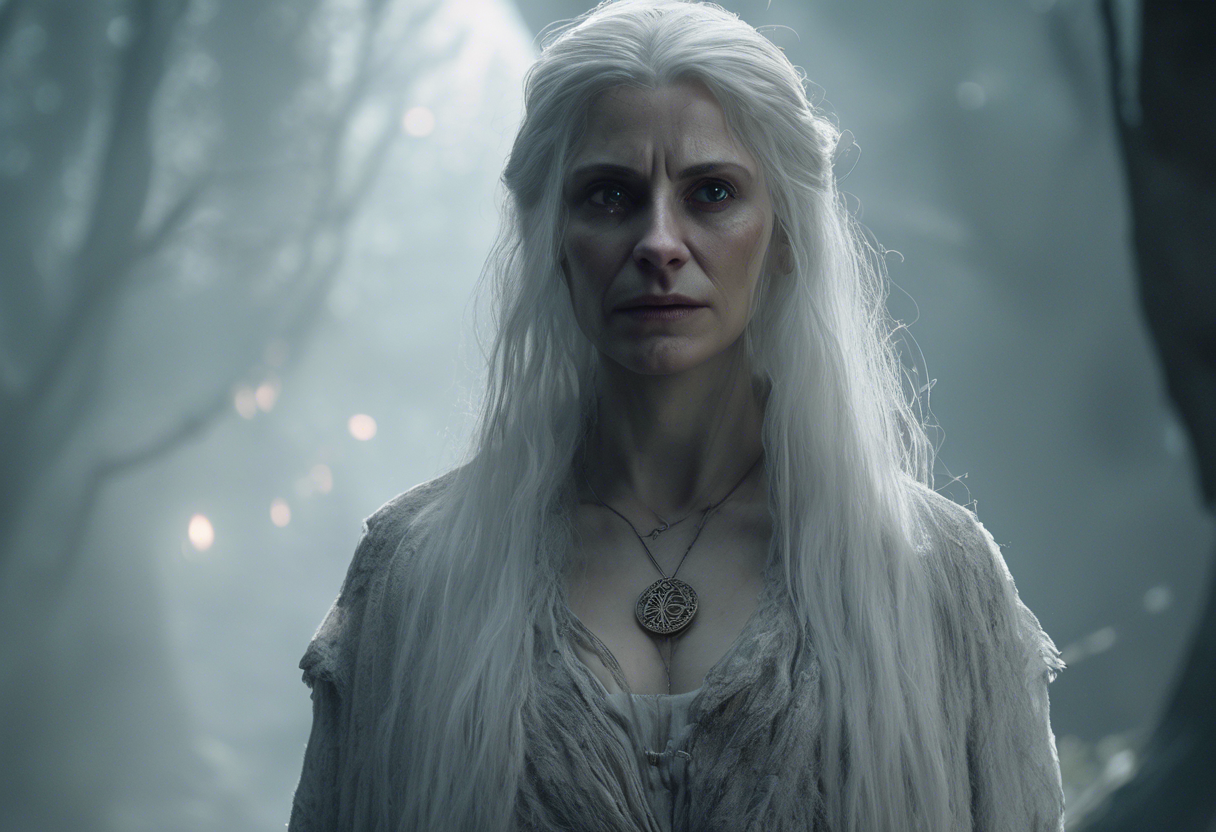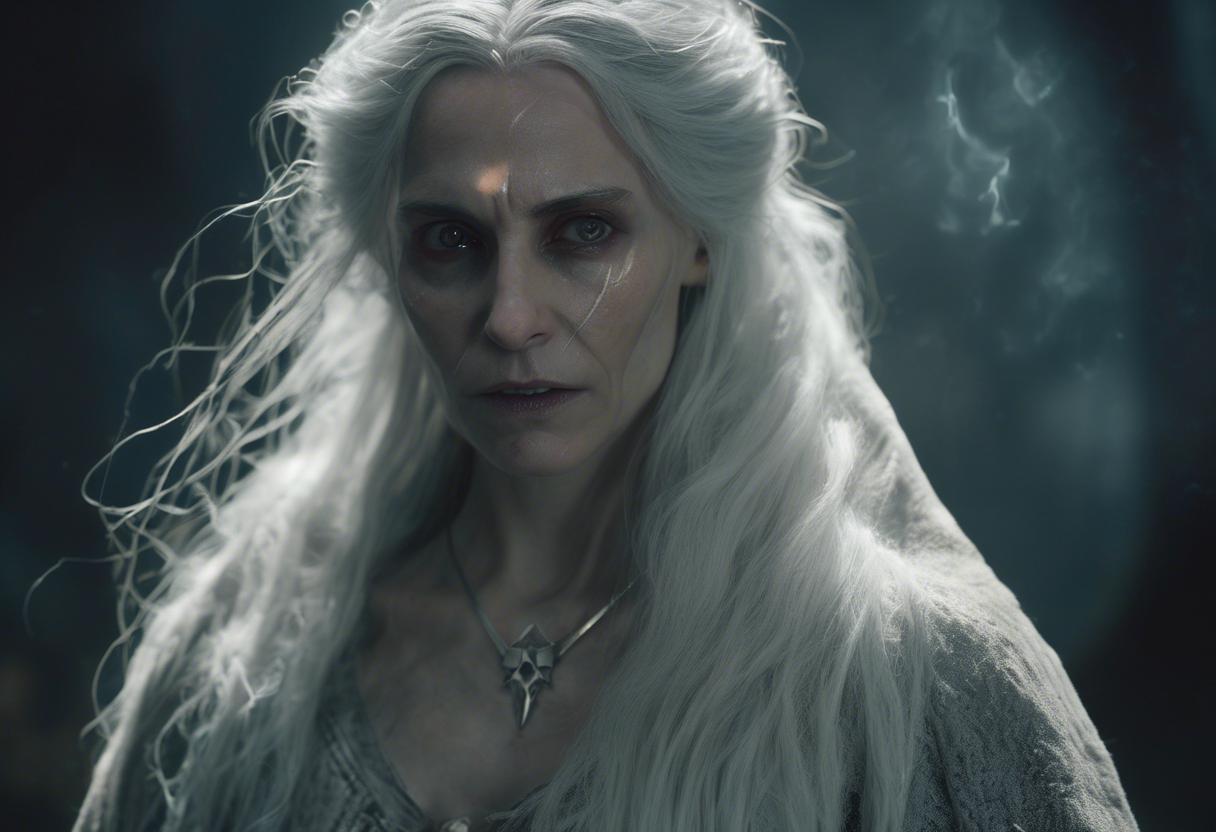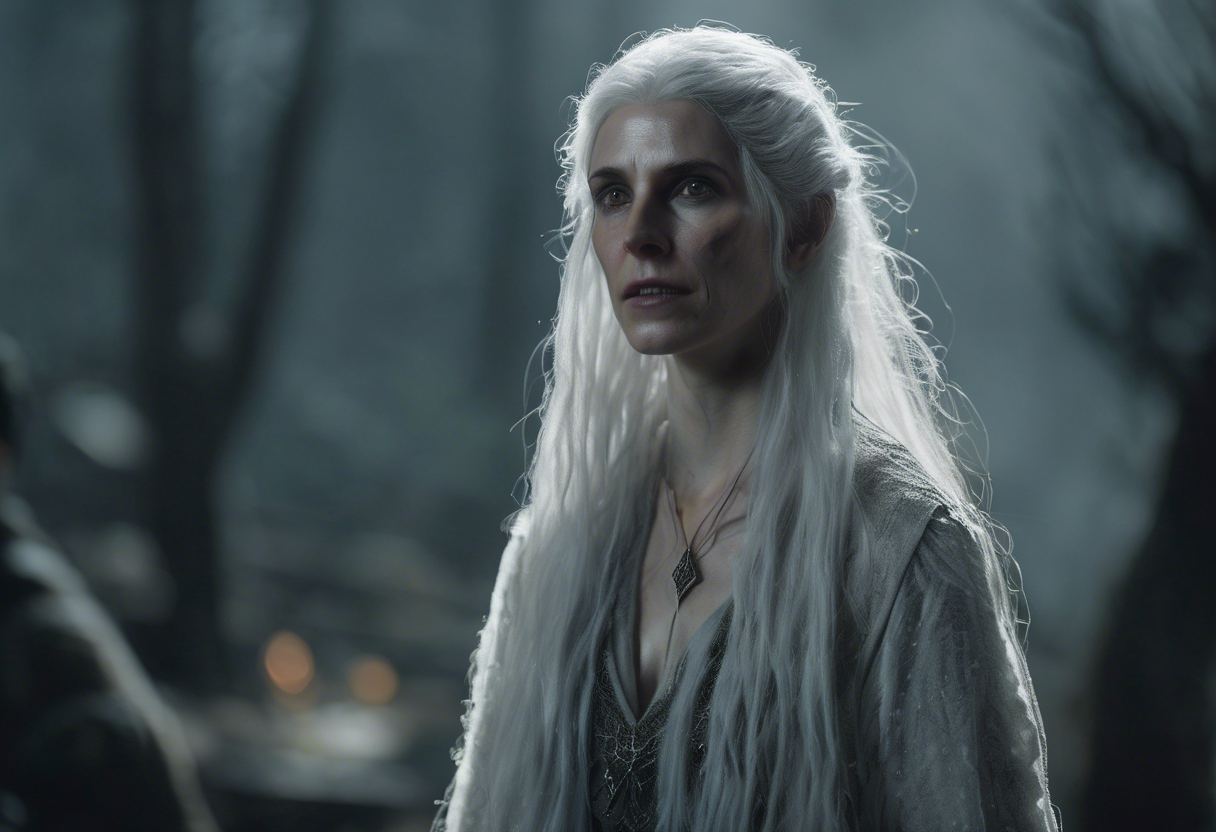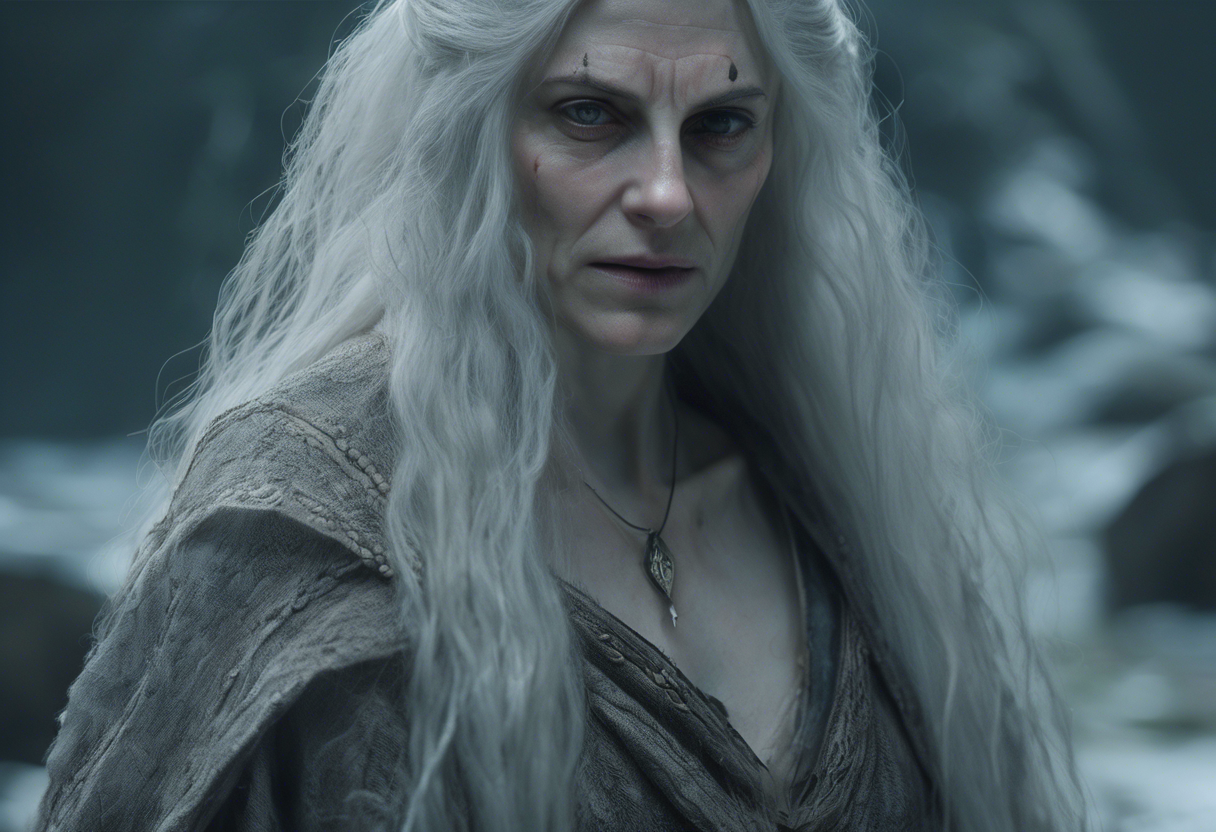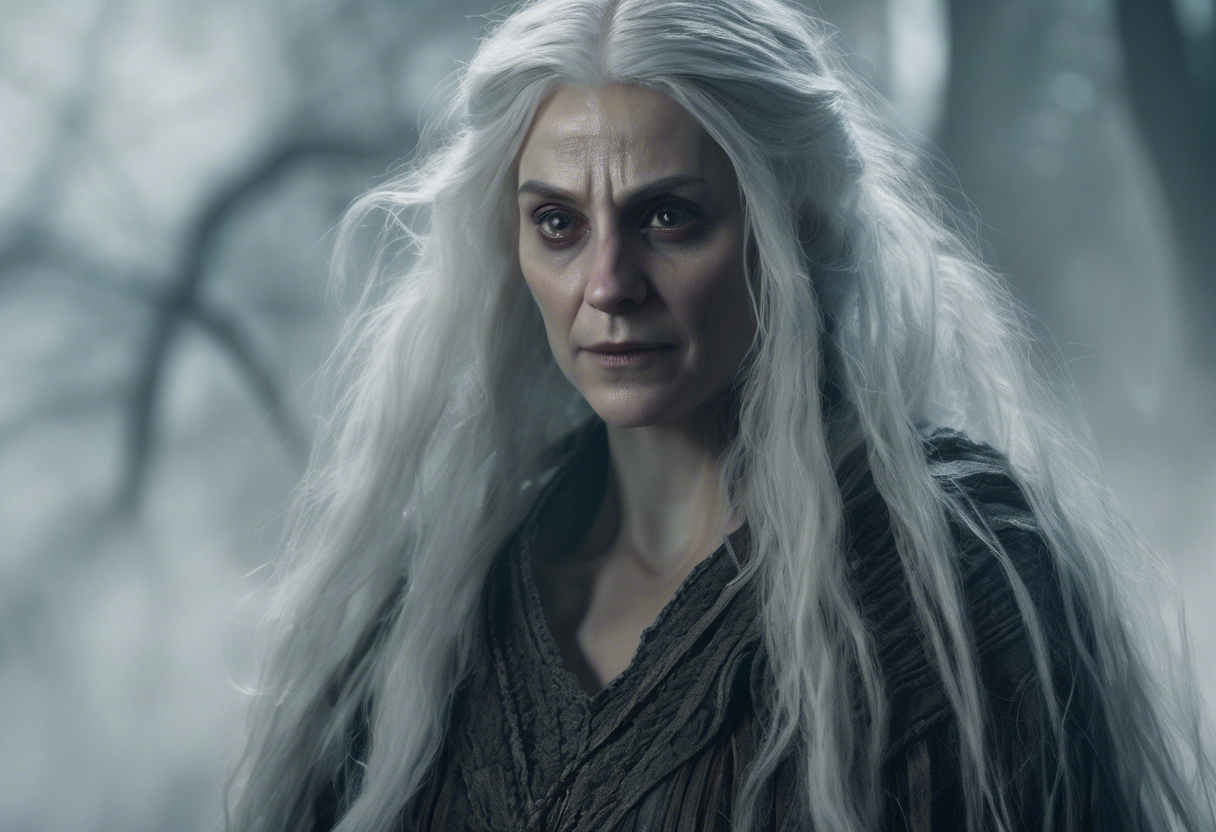Contents
Introduction
Voleth Meir, also known as the "Deathless Mother," is a pivotal and enigmatic character introduced in the second season of the Netflix series The Witcher. This entity is deeply rooted in Slavic mythology, particularly drawing inspiration from the legendary figure of Baba Yaga, a supernatural being known for her ambiguous nature, often helping or hindering protagonists in folktales[1][3].
Voleth Meir’s origins date back to a time before the Conjunction of the Spheres, a cataclysmic event that brought monsters and other supernatural beings into the world of the Continent. She is an ancient demon with dark elf blood, predating the Conjunction and thus making her over a thousand years old by the time of the series[4][5].
The character’s name, "Voleth Meir," translates to "Deathless Mother" in the Elder Speech, reflecting her invulnerability and enduring presence. Her backstory is intertwined with the creation of the first Witchers, who were tasked with imprisoning her in an enchanted hut beneath ancient Elven ruins[3][5].
Voleth Meir’s significance in the series lies in her role as a manipulative and powerful antagonist who feeds on pain and despair. Her ability to take on various forms and possess individuals makes her a formidable foe, connecting the narratives of Geralt, Ciri, and Yennefer in profound ways.
Role in the Series
Voleth Meir’s storyline in The Witcher Season 2 is complex and multifaceted. She is first introduced when the elves, led by Francesca Findabair, uncover her ancient sanctum during an archaeological dig. This discovery sets off a chain of events as Voleth Meir begins to manipulate key characters through their deepest fears and desires.
Each sorceress—Fringilla, Yennefer, and Francesca—encounters a version of Voleth Meir tailored to their specific vulnerabilities. Voleth Meir offers them power and solutions to their problems but at a terrible cost, feeding on their pain and anguish to grow stronger[1][3].
Voleth Meir’s ultimate goal is to possess Ciri, the Child of the Elder Blood, and use her powers to open a portal to another dimension. This plan is driven by her desire to return to her own world and possibly join the Wild Hunt, a group of spectral riders that pursue Ciri throughout the series[3][5].
The climax of her storyline involves a confrontation with Geralt, Yennefer, and Ciri, where Yennefer sacrifices herself to pull Voleth Meir into her body and then casts her into another dimension. This act temporarily banishes Voleth Meir but hints at her potential return in future seasons or spin-offs[1][3].
Character Analysis
Voleth Meir is a masterfully crafted character whose personality and motivations are shrouded in mystery and malevolence. Her primary strength lies in her ability to tap into the deepest fears and insecurities of others, manipulating them to further her own goals. This power is both psychological and supernatural, making her a compelling and formidable villain.
Her motivations are rooted in a desire for power and a need to feed on the pain of others to sustain herself. This hunger for despair makes her a relentless and cunning adversary, always seeking to exploit the vulnerabilities of those around her[3][4].
Despite her malevolent nature, Voleth Meir’s character adds depth to the series by highlighting the themes of suffering, manipulation, and the consequences of seeking power at any cost. Her interactions with other characters reveal their inner struggles and weaknesses, making her a catalyst for character development and plot progression.
Themes and Symbolism
Voleth Meir embodies several key themes in The Witcher series. She is a symbol of the destructive power of pain and despair, highlighting how these emotions can be exploited and manipulated. Her character also delves into the theme of power and its corrupting influence, as she offers characters power in exchange for their moral integrity and free will[1][5].
The symbolism of her hut, which stands on basilisk legs, is a direct reference to Baba Yaga’s hut in Slavic mythology, symbolizing a place of both danger and transformation. Voleth Meir’s ability to take on various forms further symbolizes the fluidity of identity and the ease with which appearances can be manipulated[1][3].
Her connection to the Wild Hunt and her role as a member of the Wraiths of Mörhogg add another layer of symbolism, representing the relentless pursuit of destiny and the inevitability of fate. This aspect of her character ties into the broader mythology of The Witcher universe, enriching the narrative with deeper lore and historical context[3][5].
Cultural Impact
Voleth Meir has made a significant impact on the cultural landscape of The Witcher fandom. Her introduction in Season 2 was met with both intrigue and apprehension, as fans were eager to understand this new and powerful antagonist.
The character’s reception has been largely positive, with fans appreciating the complexity and depth she brings to the series. Her manipulative nature and the psychological games she plays with other characters have sparked numerous discussions and analyses among fans and critics alike[2][5].
Voleth Meir’s influence extends beyond the series itself, contributing to the broader cultural narrative of powerful female villains in fantasy media. Her character archetype has inspired new interpretations of similar figures in other works, highlighting the enduring appeal of complex and multifaceted antagonists.
Critical Reception
Critics and audiences have generally praised Voleth Meir as a compelling and well-crafted villain. Her ability to manipulate characters and drive the plot forward has been highlighted as a strong point in the series. However, some critics have noted that her backstory and motivations, while intriguing, could be further developed to add more depth to her character[3][5].
The controversy surrounding her character largely revolves around her sudden introduction and the significant impact she has on the narrative, which some viewers felt was not fully integrated into the existing lore. Despite this, her presence has been widely acknowledged as a bold and effective move to expand the series’ mythology[4][5].
Legacy
Voleth Meir’s legacy in The Witcher series is one of complexity and intrigue. Her character has added a new layer of depth to the narrative, exploring themes of power, manipulation, and the consequences of seeking power at any cost.
As a character created specifically for the Netflix adaptation, Voleth Meir has set a precedent for original characters that can seamlessly integrate into existing lore. Her influence on future adaptations and spin-offs, such as The Witcher: Blood Origin, is anticipated, given her connection to the Conjunction of the Spheres and the early history of the Witchers[3][5].
In conclusion, Voleth Meir is a masterful addition to the The Witcher universe, embodying the dark, complex, and often ambiguous nature of Slavic mythology. Her enduring appeal lies in her ability to manipulate and transform the characters around her, making her a compelling and memorable villain.
References
- https://redanianintelligence.com/2022/01/07/witcher-lore-explaining-voleth-meir/
- https://www.imdb.com/title/tt11655040/
- https://www.cbr.com/the-witcher-season-2-voleth-meir/
- https://screenrant.com/witcher-season-2-voleth-meir-deathless-mother/
- https://gamerant.com/the-witcher-deathless-mother-facts-trivia-lore/

